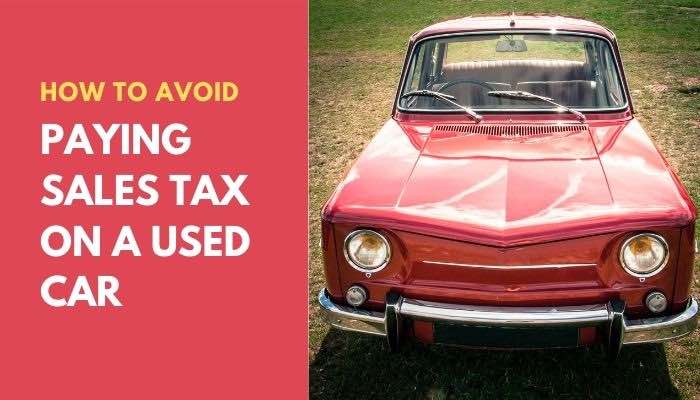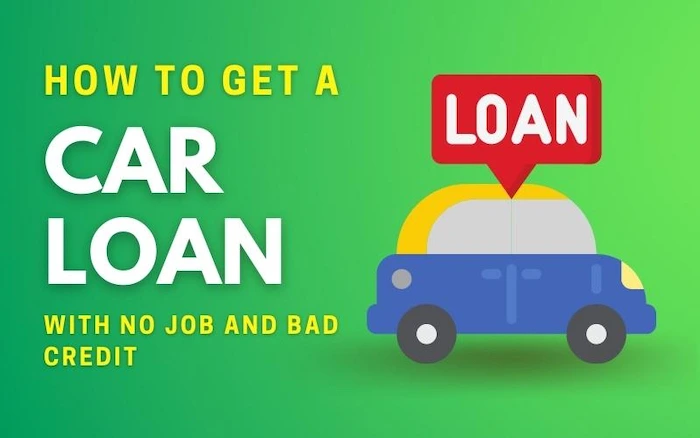How Much Down Payment for a Car with No Credit?
You can buy a car in two ways – either in cash or through financing. If you can’t raise the cash price and have no credit, it can be difficult for you to access financing. While some dealers may turn you down outright, others may require you to make a down payment to redeem your chances of getting a loan. But the question is, ‘how much down payment for a car with no credit?’ That’s a question you’ll have to settle with the dealer or lender before you can commence the car buying process.
The down payment size is essential in determining whether you’ll qualify for the loan, the interest rate, repayment period, and the amount for the monthly payment. Now that you have no credit, it’s unlikely that you have a vehicle to trade in. Therefore, the down payment has to be purely in cash.
Putting down at least 20% of the value can get you off to a good start when buying a new car. Consider putting down at least 10% of its value for a used car. However, the decision doesn’t wholly depend on you as several factors go into determining the amount of the down payment. Keep reading to learn more about the subject.
How Much Down Payment for a Car?
The diversity of the players in the car industry makes it impossible to have a one-size-fits-all amount for the down payment you can make on a car. The most critical factors that determine how much you can out down are whether you want a new or used car. Your credit rating or the lack of it also plays an important role. Here is a detailed discussion of these factors:
1 When Buying a New Car
A brand-new car has the highest value and may require a higher down payment. If you can put down 20% of the value, nothing prevents you from doing it. Lenders like it when buyers put down a substantial amount of money for a car and will likely respond with better financing terms. Besides, a 20% down payment shields you against depreciation, which refers to the ever-reducing value of the vehicle. The car will likely depreciate by 20% in the first year and even more in the subsequent years.
If you put down less than 20%, you could end up owing more than the vehicle’s worth. Selling the car within the first year for being behind the loan would mean raising money to bridge the gap between the loan balance and the sale price. Instead of gaining from the sale, you’ll end up losing money.
Even though unlikely, your car might end up getting stolen or totaled, with your auto insurance policy covering only the vehicle’s depreciated market value. But that’s only possible if your insurance policy provides actual cash value coverage. The alternative is the ‘replacement cost’ coverage, which pays more when your car is stolen or totaled. If you have actual value coverage, you’ll still need to raise money to pay the balance on the auto loan.
2 Buying a Used Car
A used car has already depreciated substantially and doesn’t require a substantial down payment. Anything from 10% down would do just fine. With that, you can avoid ending up with a balance you should pay out of your pocket. However, the down payment goes higher because you have no credit to write home about.
3 When You Have No Credit
Having no credit means either you’re buying a car for the first time or haven’t been using credit cards, and so on. You can build your credit by raising a substantial amount of money for the down payment. That reduces your loan amount, interest rate, and repayment term. With a reduced loan amount, the possible risk to the lender is substantially lower, improving the chances of you getting approved. Besides, your monthly payments will likely be lower despite having no credit.
Benefits of Putting Making a Larger Down Payment
As you grapple with the question: how much down payment for a car with no credit, you should consider the benefits of putting down a substantial amount. They include the following:
- Shorter Loan Term: A larger down payment makes it unnecessary to stretch out the loan repayment period to reduce monthly payments. The down payment reduces the loan amount substantially, making it possible to clear it in a shorter time. For example, instead of a 60-month loan term, your lender may finance you for 48 months or less. With that, you’ll get out of debt sooner.
- Lower Monthly Payments: With a larger down payment, you’ll end up with a substantially smaller loan. Therefore, your monthly payments will likely be much lower than you would expect. Your monthly financial obligations will be more affordable, helping you take good care of other issues.
- Less Interest: Another benefit of a larger down payment is reduced interest. That’s because a shorter loan term reduces the lender’s risk. Of course, the lower interest will be one of the biggest causes of reduced monthly payments.
- Qualifying for Financing: If you have no credit, one of the ways to improve your chances of qualifying is to put down more money. It can help the lender give your application a second favorable look, leading to eventual approval.
Despite the benefits of putting down a large amount, you shouldn’t drain all your savings to make a down payment. Leaving a good amount of money in your savings account can make it easier for you to handle emergencies and other unexpected occurrences.
How to Get No Credit Car Finance Offers?
Even as you think about how much down payment for a car with no credit, you should consider what it takes to qualify for a finance offer. Here’s how to get no-credit car financing:
1. Get a Co-Signor
There is no way a lender can consider you for car financing without a credit history and no guarantor. You wouldn’t even get the chance to know how much money you can put down. In that case, you need a co-signor who should essentially have a stellar credit history. The lender won’t hesitate to give you a loan because of the co-signer’s credit history.
If you fail to pay the loan, the lender may ask the co-signor to stand in for you. However, that may ruin your relationship with the co-signor, making it difficult to get their help in the future. Besides, the default will go into your credit history, making it difficult for you to qualify for credit in the future.
2. Leverage Alternative Credit Data
Possibly you haven’t taken a credit card yet, and you see no need to take a mortgage. That means you have no way to build a credit history. If you have utility bills, a checking account, your rent, and your cellphone, you can take advantage by making timely payments on all of these aspects. With that, you’ll demonstrate how you can make timely payments. That’s possible using the FICO score XD.
However, not every lender uses alternative credit scoring, such as the FICO score XD. For that reason, you should always research lenders to know the kind of credit scores they use to make decisions. Besides, you may want to get a personal loan, which is usually flexible, offering flexible interest rates.
3. Consider Dealer Financing
Some car dealers have no problem providing financing to individuals with no credit. Why don’t you approach these dealers for a deal? Look for a reputable dealership withs links to prominent car marketers. You can ask for details on a possible loan offer.
However, it would be best to be sure that the dealer can work with you despite not having credit. If that’s the case, find out what they need to consider your loan application. They may ask you to prove that you have a regular income and to put down a substantial amount.
4. Get Financing from A Community Bank or Credit Union
Do you belong to a credit union? If so, that’s your best option for getting a car loan with no credit. A small community bank is also more likely to give you an open ear. While at it, consider is the lender’s program specifically targets first-time car buyers like you. with that, you would be sure you will get financing with little or no credit.
Of course, the lender will overlook your credit score. However, they’ll need to look at other factors like pay stubs, job stability, monthly utility bills. They might also probe you to explain why you have no credit. If you convince the lender, they might give you a car loan.
5. Consider a Marketplace Loan
There is a market for everything, including loans. When you choose a marketplace loan, you have to work through a broker to help you review your financial data and get in contact with potential sponsors. The sponsors will assess your application and decide whether or not they can advance the loan to you.
6. Tap Your Retirement Account
Have you been putting away money for your retirement? Why don’t you tap into your retirement account to get money to buy a car? Of course, you might not want to tamper with plans for your retirement. If having a car is a priority, use part of the money to get one for now. Later on, you can replenish your retirement savings. With that, you wouldn’t have to explain away the reason why you have no credit.
How to Save for a Down Payment?
Most of the time, you might not have enough money to make a down payment. The following are some of the ways you can work towards saving enough money for a down payment:
- Budget: A budget is a spending plan that can help you monitor your income and expenditure month-to-month. Once your budget starts running, you’ll identify areas where you can get money to save for a more significant down payment.
- Set Goals: Start by deciding how much money you want to put down on the car. After that, you can decide how much you’ll save to reach your financial goals within a given time. For example, you may want to save $3,000 in 15 months. If you contribute $200 every month, you’ll reach your goal within no time.
- Reduce Spending: Avoid spending a lot of money on big purchases, clothing, and unused membership. With that, you’ll increase the amount of money you can save to raise your down payment. Therefore, you’ll need a shorter time to reach your target.
- Reduce Credit Card Usage: As you strive to raise money for the down payment, you need to stop using your credit card temporarily. That’ll lower your debt load and leave you with more money to save for a down payment.
Conclusion
How much down payment for a car with no credit? The information in this article has answered that question adequately. The ideal down payment for a new car is at least 20% of the vehicle’s value, while that of a second-hand vehicle is 10%. In either case, you’ll cover yourself against losses that occur due to depreciation in the car’s value. However, you can get no credit financing using other methods like getting a co-signor, using alternative data, dealer financing, credit union, marketplace loan, or getting money from your retirement account.
Frequently Asked Questions (FAQ)
Should I put money down on a car with no credit?
Yes. You should put money down on a car with no credit to improve your chances of qualifying for a loan. A down payment also increases the interest rate, monthly payments, and loan term.
How much should my car down payment be?
Your car down payment should be as much as you can raise. Ideally, you should pay a 10% down payment on a used car and 20% on a brand-new car.
Can I buy a car with no credit?
Yes. You can buy a car with no credit if you have cash or qualify for a loan. However, to qualify for a loan, you might have to put down a substantial amount of money.




